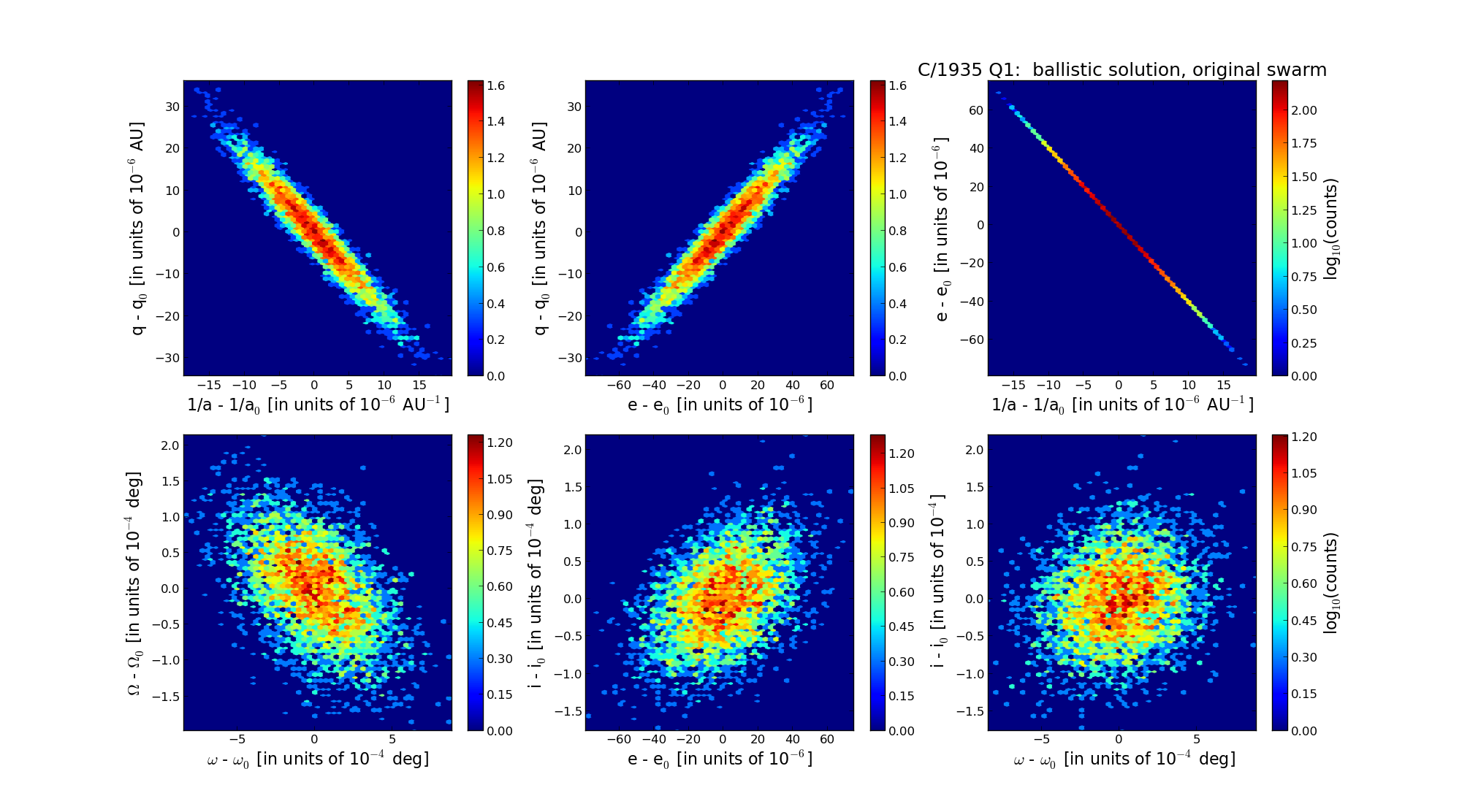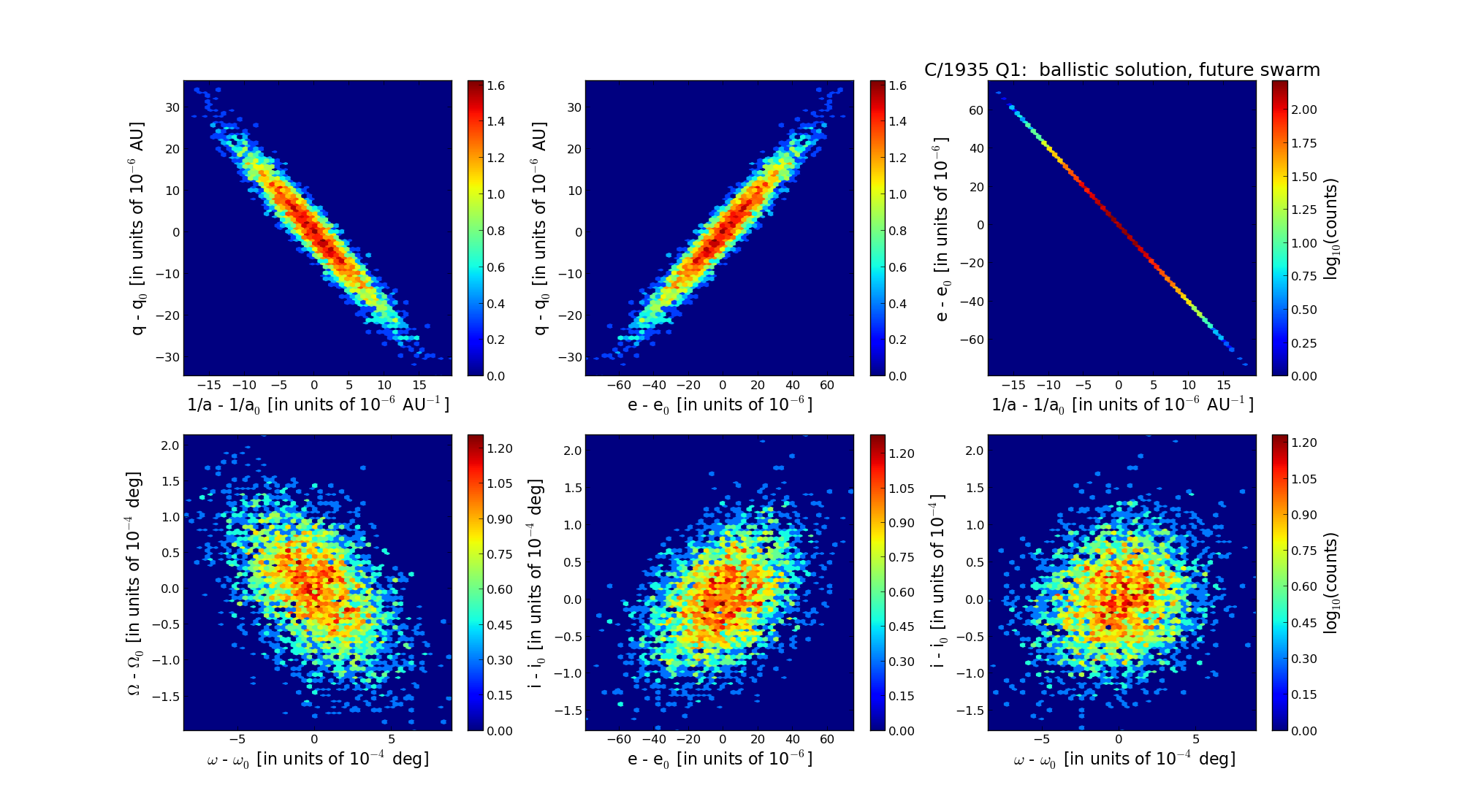| Solar System Dynamics & Planetology Group |
 |
C/1935 Q1 van Biesbroeck |  |
| Solar System Dynamics & Planetology Group |
 |
C/1935 Q1 van Biesbroeck |  |
| number of observations | 131 |
| number of residuals | 250 |
| data interval | 1935 July 3 — 1937 Nov. 12 |
| rms [arcsec] | 1.49 |
| orbit quality class | 1a |
| Epoch (TT) | 19360422.0 | = JD 2428280.5 |
| time of perihelion passage (TT) | 19360511.635659 | ± 0.001683 |
| perihelion distance | 4.04341779 | ± 0.00000969 |
| eccentricity | 1.00206616 | ± 0.00002076 |
| argument of perihelion [deg] | 44.895725 | ± 0.000252 |
| longitude of the ascending node [deg] | 300.561472 | ± 0.000059 |
| inclination [deg] | 66.112186 | ± 0.000052 |
| inverse semimajor axis [10-6 au-1] | -510.99 | ± 5.13 |

| Epoch (TT) | 16320922 | |
| time of perihelion passage (TT) | 19360511.115435 | ± 0.001724 |
| perihelion distance | 4.03419814 | ± 0.00000988 |
| eccentricity | 0.99994692 | ± 0.00002095 |
| argument of perihelion [deg] | 45.035086 | ± 0.000250 |
| longitude of the ascending node [deg] | 300.599583 | ± 0.000060 |
| inclination [deg] | 66.129296 | ± 0.000051 |
| inverse semimajor axis [10-6 au-1] | 13.16 | ± 5.19 |

| Epoch (TT) | 22360807 | |
| time of perihelion passage (TT) | 19360511.495408 | ± 0.001671 |
| perihelion distance | 4.03970045 | ± 0.00000994 |
| eccentricity | 1.00115405 | ± 0.00002096 |
| argument of perihelion [deg] | 44.839534 | ± 0.000252 |
| longitude of the ascending node [deg] | 300.607693 | ± 0.000060 |
| inclination [deg] | 66.119413 | ± 0.000051 |
| inverse semimajor axis [10-6 au-1] | -285.68 | ± 5.19 |